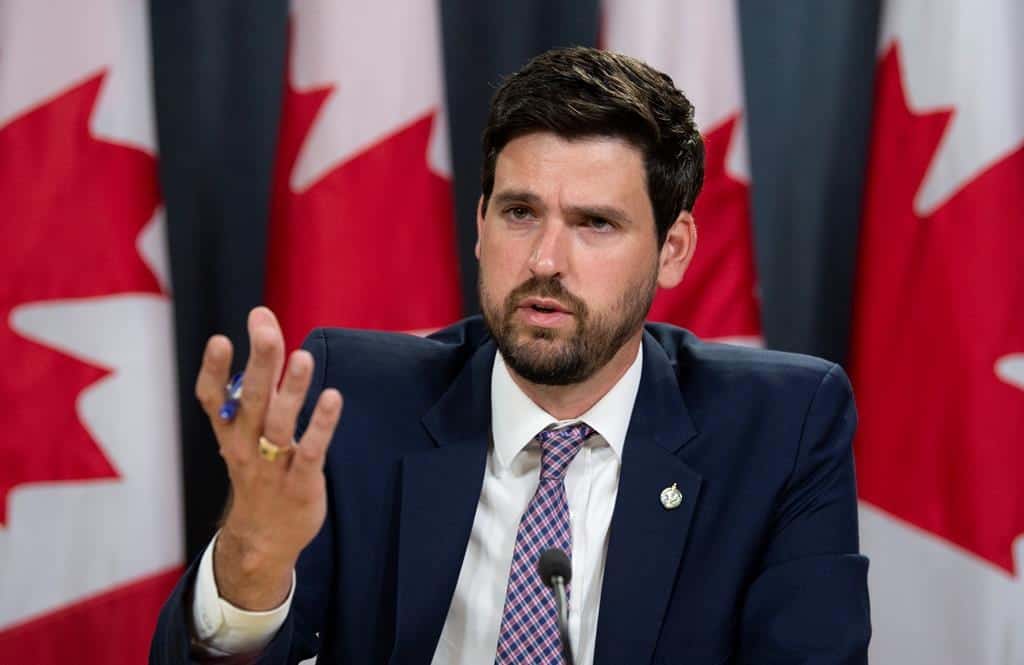Canada Immigration Minister Sean Fraser is reportedly hoping to unveil a new program to allow temporary residents to more quickly get their permanent residence.
“We are looking right now at the best path forward to create a permanent pathway for temporary residents,” Fraser reportedly told the CBC.
Read more
Temporary To Permanent Residence Transition: Canada’s Numbers Quadruple
Canada’s Temporary to Permanent Residence Pathway For Graduates, Essential Workers Opens Noon Thursday
Every Document You Will Need For Canada’s New Temporary to Permanent Residence Pathway
Last year, Canada announced it would accept 90,000 applications from temporary residents under a one-time, temporary-to-permanent resident (TR-to-PR) program which took applications until November.
TR-to-PR Pathway Flooded With 84,177 Applications Last Year
That pathway targeted healthcare and other workers in Canada and recent international graduates from Canadian colleges and universities. It applied across the country with the exception of the francophone province of Quebec which operates its own immigration system.
By the close of the year, the pathway had accepted 84,177 applications and Immigration, Refugees and Citizenship Canada (IRCC) figures show Canada had welcomed 23,885 new permanent residents under this TR-to-PR pathway.
Another 22,190 have already received their permanent residency under this pathway in the first four months of this year.
Watch Video
In its Immigration Levels Plan for 2022 to 2024, Canada has targeted 40,000 new permanent residents under federal economic public policies for this year, which includes the TR-to-PR pathway, with a range of 30,000 to 48,000 new permanent residents.
At the current rate of admission of new permanent residents to the country, Canada could welcome 66,570 new permanent residents under the TR-to-PR pathway this year, indicating Ottawa is well on track to hitting that goal.
The Immigration Levels Plan also targets an additional 32,000 new permanent residents under that pathway for 2023.
Now, the immigration minister is eyeing an entirely new pathway for temporary residents to get their permanent residency and has reportedly told the CBC he expects to have something to present within 120 days following a motion in the House of Commons last month.
New TR-to-PR Pathway Deep In The Planning Stage, Says Immigration Minister
“That actually puts me on a clock to come up with a framework to establish this new permanent residency pathway, not just for international students, but also for temporary foreign workers,” Fraser reportedly told the CBC.
“We’re in the depths of planning the policy so we can have a policy that’s not driven by a need to respond urgently in the face of an emergency, but actually to have a permanent pathway that provides a clear path for those seeking permanent residency who can enter Canada.”
In his interview with Canada’s national broadcaster, the immigration minister did not divulge any details of this new pathway.
But Canada is known to be currently facing a massive labour shortage.
Statistics Canada reports the country’s unemployment rate is at a record low of 5.1 per cent and the ratio of unemployed people to job vacancies at an all-time low of 1.2 in March.
In March, Canadian employers were struggling to fill a record high of more than a million jobs, exactly 1,012,900.
With that labour shortage, retaining international students and temporary foreign workers could help ease the strain on employers.
In Canada, there are three types of temporary work visas for foreign nationals who want to work in the country:
- open;
- employer-specific, and;
- post-graduate.
Open Work Permits Allow Foreign Nationals To Work For Employers Anywhere In The Country
With an Open Work Permit, a foreign national can work anywhere in Canada for any employer without that business having to go through a Labour Market Impact Assessment (LMIA).
Employer-specific work permits, on the other hand, only allow foreign nationals to work for specific employers who have tried, through the LMIA process, to find Canadians to do those jobs. When the employer is unable to find a suitable candidate in Canada, he or she can hire a foreign national who then has to get an employer-specific visa.
The last type of work permit is for international students who have studied at a Canadian college or university, graduated, and now want to continue to live and work in Canada. The Post-Graduate Work Program permit (PGWP) allows them to do that and the length of time of the permit depends on the length of the study program they completed.
Through agreements with many other countries, Canada offers the IEC program and issues work permits to foreign nationals of those countries who want to come here:
- for a working holiday which allows them to work for many employers without having a job offer before they come to Canada;
- as young professionals planning to come to Canada for a job that boosts their professional development with the same employers back in their home country, or;
- for an international co-op internship, typically to allow them to graduate from a study program at a Canadian college or university which requires they complete a work term in Canada.
International students who want to come to study at a Canadian college or university for more than six months need to get a Study Permit once they have been accepted into that program.
Immigration Minister Wants New Pathway For International Students
Fraser has already previously hinted at a new pathway to permanent residency for international students which may change the rules with regards to study permits soon/
Currently, international students need to indicate that they intend to leave Canada once their study permit expires. International students also need to show they have enough funds to support themselves in Canada.
In Quebec, international students also need to get permission from the province before getting a study permit. That permission is obtained by applying for a Quebec Certificate of Selection (CSQ) once the student has been accepted into his or her study program.
Among international students coming to Canada, roughly a third every year plan on seeking permanent residence once they graduate. That means these students first get a study permit to complete their studies and then apply for a PGWP if they get a job offer upon graduation. That allows them to get more Canadian work experience and strengthens their Comprehensive Ranking System (CRS) score for their application for permanent residency through Express Entry.





